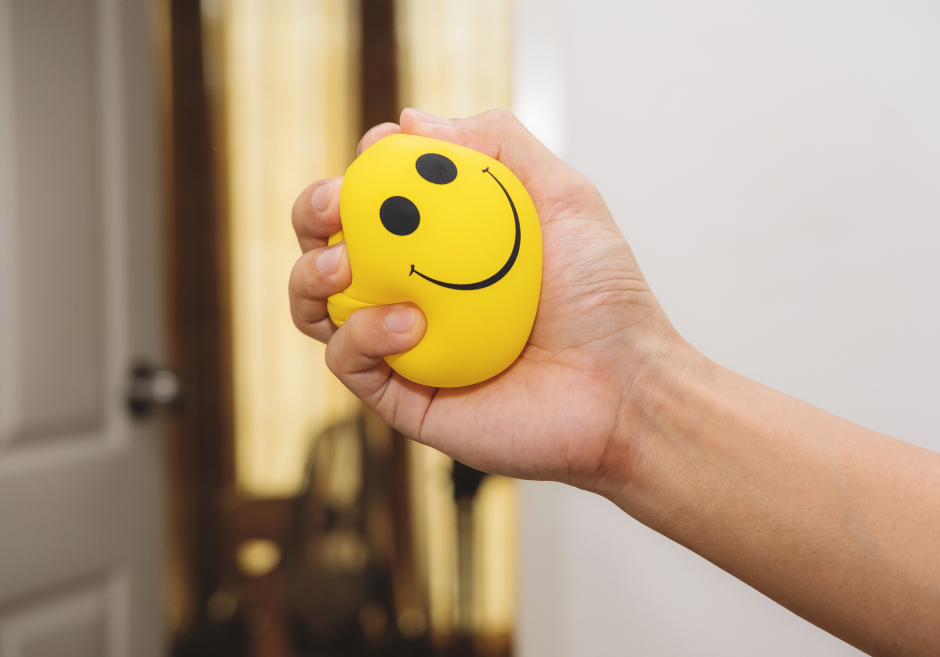
Toys that help calm anxiety and stress in children with Autism
Children with special educational needs or diagnosed with Autism, SPD, OCD, PDA or other conditions often have accompanying sensory issues. Children can present with hyper-sensitivity (over responsive) or hypo-sensitivity (under-responsive) and have issues regulating their sensory experience of the world. These sensitivities can affect what the child sees, hears, smells, touches, tastes, also their balance and posture, and their awareness of their own body - both the body itself, and of the space it inhabits.
Why do children with special needs suffer from anxiety?
Overwhelm and meltdown are frequently experienced by over responsive children. Lack of sensation, low sensitivity to pain, frequently crashing into things can often be the experience of under responsive children. Where children only have a small window of tolerance they may have periods of being over responsive and then suddenly get overwhelmed and become under-responsive, only to then have to try and move in the opposite direction again. It’s not easy to figure out.
You will need experienced therapeutic help from a sensory integration trained Occupational Therapist but waiting lists can be long so what can you do to help in the meantime?
How can sensory toys help with anxiety in children?
Sensory toys and play are designed specifically to stimulate touch, smell, sound, taste and movement and improve self awareness. Ideally the young person can safely explore their thresholds for different sensory sensations and learn what they can enjoy and which they can filter out. This can lead to feeling calmer and more secure.
 Sensory toys can also help children gain better focus and reduce anxiety before something is going to happen, or it can help with de-escalation strategies. Sensory play can help refine gross and fine motor skills. Sensory play should always be at the child’s pace and never forced, the aim is to engage and explore the senses in a way that is enjoyable. Positive experiences with sensory play can help develop social skills and increase self-confidence.
Sensory toys can also help children gain better focus and reduce anxiety before something is going to happen, or it can help with de-escalation strategies. Sensory play can help refine gross and fine motor skills. Sensory play should always be at the child’s pace and never forced, the aim is to engage and explore the senses in a way that is enjoyable. Positive experiences with sensory play can help develop social skills and increase self-confidence.
What are the most popular sensory toys and games?
A sensory play box is likely to include a wide range of toys in a variety of colours and textures, scents and sounds, with things that cover all the different senses. The overall aim for sensory play is to create a safe and relaxing space in which to explore different sensory experiences. The most popular include:
- Messy play - This is usually tray based or in a designated messy zone and can involve sand, slime, plasticine, gelli, shredded paper, water beads and more. The more textures and sensations, the better. If you are looking for messy play products browse our range of Zimpli Kids.
- Squeeze ball/ stress ball – deep muscle work can really help sensory kids, squeezing is also helpful for developing motor skills.
-
Sensory bins – for kids who like surprises, sensory bins provide lots of input with the bonus of finding other toys mixed in. There are lots of great ideas for low cost options using coloured rice and pasta on Pinterest.

- Sensory dens – usually a safe space, tent or room where light is lowered to reduce sensation or for use of light up toys and projectors.
- Fidget toys – spinners, poppers and other fidget toys are great for keeping in pockets or bags to help keep hands busy. Especially good for ADHD.
- Weighted toys, lap pads, shoulder pads, blankets and vests - Great proprioceptive input that promotes calming and relaxing and can be part of a wind down strategy.
- Stretch sacks / body sox – breathable and lightweight (usually lycra) stretch socks and sacks that give overall hug and stretch sensation. Reported to be good for reducing anxiety.
- Chewable toys – chewing crunchy and chewy foods is a vital part of a sensory program. For times when eating is not appropriate kids can use chewables. These should be made with non toxic materials, and can be designed as necklaces or bracelets to make them suitable for wearing all day in a way that is discreet but handy. They can be textured or smooth and often come in different grades of durability. Shop our range of chewable toys.
- Sensory mats or stepping stones – these give different textures, colours, sensations for each step, or can be nobbled, smooth or ridged and involve different materials that can be explored with the hands or feet.
- Sound toys – rain-makers, beaded drums, wind chimes are examples of toys that make soothing sounds. Some children like predictable music toys like nursery bed time toys as the song will always be the same.
- Liquid timers, lava lamps and light projectors – all very visually appealing and feature smooth and gently moving shapes for relaxation and wind down.
- Vibrating toys, cushions or massagers - Many sensory kids love the soothing sound and sensation of a vibrating item. Some studies have linked vibration to an increase in verbal responsiveness in children.
- Ear Defenders – always have ear defenders handy for sensory time as sound can sometimes become overwhelming.
Its important to remember that sensory play and sensory toys can help but will not replace therapeutic evidence based treatments you will get recommended by your Sensory Integration trained Occupational Therapy team.



Leave a comment